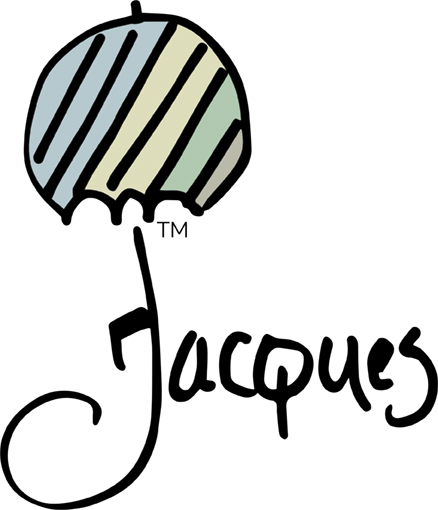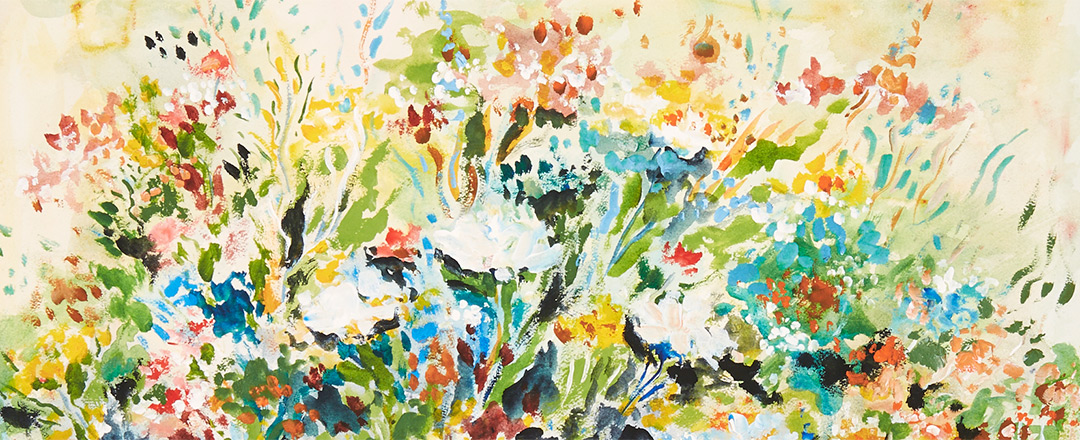Prints of chef and artist Jacques Pepin’s original artwork are made using the giclée technique. Here’s an overview of how these art prints are made. Unlike home or office printers, a giclée printer requires specially-formulated inks and specialty papers, resulting in the highest possible quality for each print.
Unlike traditional offset lithography, there is practically no dot pattern. The prints are nearly continuous tone, meaning, even under magnification, they are as close as physically possible to the original.
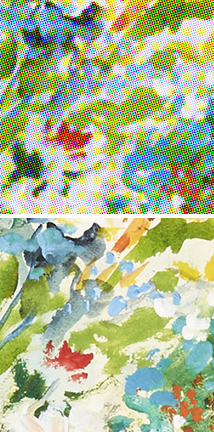 These two images are simulations of the difference between offset (CMYK) (top) printing vs. giclée (bottom) continuous tone printing. The image on the top illustrates the dot pattern of traditional offset printing where dots of cyan, magenta, yellow and black are printed from separate plates and inks on press. Where colors overlap or are adjacent, a range of different colors is achieved. The image on the bottom illustrates a nearly continuous tone image utilizing 8 or more different inks “sprayed” onto the paper, which is how giclée prints are made. The additional inks also give the added benefit of reproducing a wider range of colors resulting in a more accurate match to the original.
These two images are simulations of the difference between offset (CMYK) (top) printing vs. giclée (bottom) continuous tone printing. The image on the top illustrates the dot pattern of traditional offset printing where dots of cyan, magenta, yellow and black are printed from separate plates and inks on press. Where colors overlap or are adjacent, a range of different colors is achieved. The image on the bottom illustrates a nearly continuous tone image utilizing 8 or more different inks “sprayed” onto the paper, which is how giclée prints are made. The additional inks also give the added benefit of reproducing a wider range of colors resulting in a more accurate match to the original.
The photograph or scan of the original work is made under the best possible lighting conditions and color-balanced to the original before any printing is done.
 Wikipedia: What is Giclée Fine Art Printing? [*]
Wikipedia: What is Giclée Fine Art Printing? [*]
“(/ʒiːˈkleɪ/ zhee-KLAY) is a neologism coined in 1991 by printmaker Jack Duganne for fine art digital prints made on inkjet printers.[1] The name was originally applied to fine art prints created on a modified Iris printer in a process invented in the late 1980s. It has since been used loosely to mean any fine-art printing, usually archival, printed by inkjet. It is often used by artists, galleries, and print shops to suggest high quality printing, but is an unregulated word with no associated warranty of quality.”
Quotation above is taken directly from the website cited and is the property of that source. It is meant to inform the reader and to give credit where it is due.
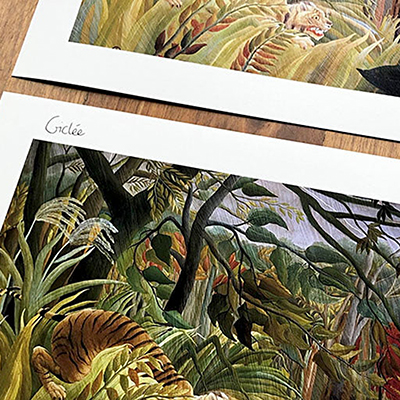 Prodigi: What is Giclée Fine Art Printing? [*]
Prodigi: What is Giclée Fine Art Printing? [*]
“If you’re an artist or an art collector, you may already know that Giclée fine art printing is the gold standard when it comes to producing museum-level quality prints. But what exactly is Giclée? Why is it superior print technology and why should you use it to reproduce your print on demand artwork? As you may have already guessed thanks to the accent, Giclée derived from a blend of French words; gicleur, which is a technical term for a nozzle or jet, and gicler, to spray out. The term Giclée — pronounced gee-klay — was initially coined by printmaker Jack Duganne in 1991. Today, it’s used to describe fine art printing using pigment based, archival quality inks, manufactured on advanced inkjet printers.”
Quotation above is taken directly from the website cited and is the property of that source. It is meant to inform the reader and to give credit where it is due.
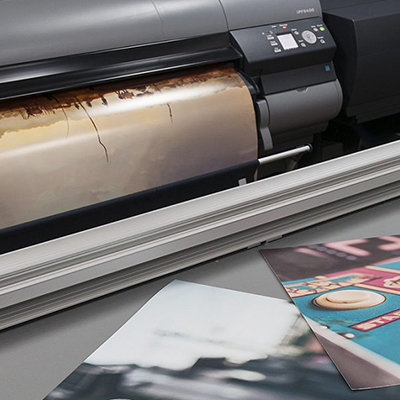 Agora Gallery: Giclée Printing Process—What Artists Need to Know [*]
Agora Gallery: Giclée Printing Process—What Artists Need to Know [*]
“Giclee is a term for fine art digital prints made on inkjet printers and is typically used in reference to high-quality prints. The term was coined by an American printmaker Jack Duganne in 1991 and describes the way the ink is applied to paper during the printing process. In French, the term literally means “to spurt” or “to squirt”, though French speakers know it also carries with it a sexual connotation. With this is mind you may (or may not) prefer to use other names for the process, such as digital or inkjet print. If you chose to print on archival paper, it could be called an archival print.
While Giclee prints are more costly to produce compared to the commonly used four-color offset lithography process, a higher print quality is not the only benefit. The turnaround time on an inkjet print is faster and the artist often has more control over the outcome through color correction and the type of paper used.
Photographs which are printed directly from the original digital (usually called original digital photographs). Photographs which are manipulated or enhanced in Photoshop, Lightroom or another editing software before being printed. Depending on the amount of work done, these may either be called reproductions or original works of art. Photographs which are manipulated or enhanced after having being printed. Once again, these may either be called reproductions or original works of art. Whichever category your work falls into, if you have a piece printed in high-quality inkjet, all may be called giclee prints and sold as either open or as a limited edition, signed or unsigned depending on your preference.”
Quotation above is taken directly from the website cited and is the property of that source. It is meant to inform the reader and to give credit where it is due.
